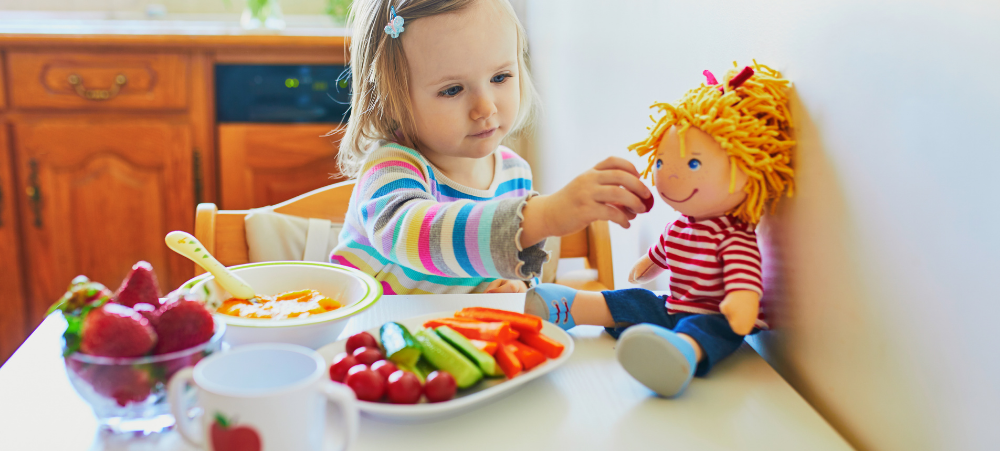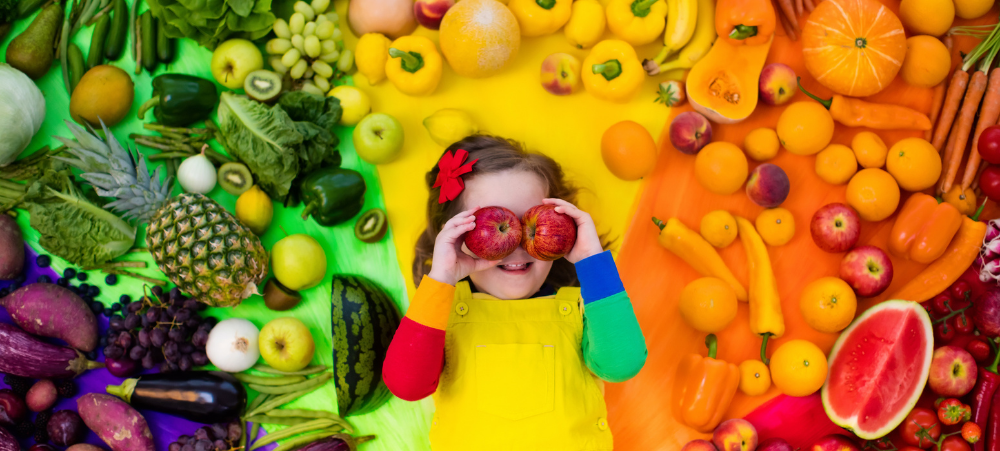Parents play a big part in shaping children’s eating habits. In a fast paced world where most parents have to juggle their time between work, play and home and are faced with all the latest food fads, it is no surprise that some parents may need some help understanding what healthy food for their little ones is. Getting children to eat what’s best for them can be a challenge, and giving in to their pestering for less-than-nutritious food can make it awfully confusing. Remember you are the parent and you do the shopping.
So, how do you strike the right balance between food that is good for them, and food that they enjoy?
You’ll find the answer here…
The Famous Five
For starters, you need to know the Five Main Food Groups:
- Grains
- Healthy Fats
- Fruits & Veggies
- Dairy
- Protein
Children need a few servings from each of these groups, every day. How often and how much, of each group your child should eat every day will depend on how old they are.
Let’s take a closer look at each of these food groups.
1. Grains
Foods such as cornflakes, oats, rice and bread are all examples of grains. The group can further be divided into Whole Grains and Refined Grains. Oatmeal is an example of a wholegrain product while white bread flour is an example of a refined grain.
Wholegrains are preferable because they retain their fibre, irons and vitamins, while many refined grains have to be enriched with these elements after processing.
Servings per Day & Portion Sizes
Below you’ll find a rough guide to the number of daily servings and portion sizes for grains categorised by age range. Do keep in mind that each child is different and you may find your little one prefers to eat more at lunchtime and less at dinner, or the other way around.
| Age | Servings/Day | Portion Size |
| 1 – 3 | 2 – 3 |
½ Slice of Bread ¼ Cooked Cereal, Rice or Pasta ⅓ Cup Dry Cereal |
| 4 – 6 | 2 – 3 |
½ Slice of Bread
⅓ Cooked Cereal, Rice or Pasta ½ Cup Dry Cereal |
| 7 – 10 | 2 – 3 |
1 Slice of Bread ½ Cooked Cereal, Rice or Pasta ¾ Cup Dry Cereal |
2. Healthy Fats
Over the years, there’s been much debate about the role of fat in a healthy diet. For children, fat is good source of energy which is necessary for active, growing children.
Monounsaturated and polyunsaturated fats such as olive, canola and sunflower oil are generally considered healthier. How you cook with oil is just as important as the oil you cook with. Stir-frying or pan-frying is better than deep frying because it uses less oil.
That doesn’t mean your children should never enjoy deep-fired food like chips. Just reserve these types of food for special occasions.
3. Fruits & Vegetables
Everybody knows the ‘five-a-day’ rule when it comes to fruits and vegetables. While most children prefer fruits over vegetables, you might just need to experiment until you find a vegetable (or vegetables) your child really likes to eat. Texture plays a role too, so try different cooking methods to find out what your child prefers.
Fruit juice may count towards the recommended number of servings, but fresh fruit is preferable because it contains the fibre which is so important for keeping kids regular.
Servings per Day & Portion Sizes
| Age | Servings/Day | Portion Size |
| 1 – 3 | 5 |
¼ Cup Cooked Vegetables ¼ Cup Cooked, Frozen or Canned fruit ½ Piece of Fresh Fruit ¼ Fresh Juice |
| 4 – 6 | 5 |
½ Cup Cooked Vegetables ¼ Cup Cooked, Frozen or Canned fruit ½ Piece of Fresh Fruit ⅓ Fresh Juice |
| 7 – 10 | 5 |
½ Cup Cooked Vegetables ⅓ Cup Cooked, Frozen or Canned fruit 1 Piece of Fresh Fruit ½ Fresh Juice |
4. Dairy
Most children have no trouble eating dairy products such as milk, cheese or yoghurt. It’s the calcium in dairy that children need to develop strong teeth and bones. And if you’re concerned about the fat content, low-fat options are readily available. Vitamin D can help our bodies absorb calcium better, so make sure your child spends some time outdoors every day – although make sure they avoid the midday heat and put on sunscreen.
Servings per Day & Portion Sizes
| Age | Servings/Day | Portion Size |
| 1 – 3 | 2 – 3 | ½ Cup of Milk 14gr Cheese ⅓ Cup of Yoghurt |
| 4 – 6 | 2 – 3 | ½ Cup of Milk 28gr Cheese ½ Cup of Yoghurt |
| 7 – 10 | 2 – 3 | 1 Cup of Milk 28gr Cheese ¾ – 1 Cup of Yoghurt |
5. Protein
Foods rich in protein, such as eggs, meat, seafood and legumes, help to build and repair muscles and contain essential nutrients. That makes protein an important part of a balanced diet for both children and adults. Each protein has different nutrients so it makes sense to feed your child a variety of different proteins.
Servings per Day & Portion Sizes
| Age | Servings/Day | Portion Size |
| 1 – 3 | 2 | 28gr Meat, Fish or Chicken ¼ Cooked Beans ½ Egg |
| 4 – 6 | 2 | 28gr Meat, Fish or Chicken ⅓ Cooked Beans 1 Egg |
| 7 – 10 | 2 | 28 – 56gr Meat, Fish or Chicken ½ Cooked Beans 1 Egg |
Making Food Fun
Once you know what to feed your child, here are some ideas on how to make them look forward to their meals.
1. Make it Easy to Eat
Little children often eat with their hands and tend to give up easily if something is difficult to hold or manipulate. Keep this mind when preparing meals and cut food to bite-size proportions. If it’s easy for them to grab and pop in their mouths, they won’t waste time picking at their food.
When it comes to food that can be eaten whole, like fruit, it’s best to do the prep work for them. Peel and slice things in advance so they don’t have to fuss with skins and pips.
2. Keep it Simple & Fresh
It takes young children a while to learn what foods they like, so don’t overwhelm them with complicated flavours. Keep meals simple and use fresh ingredients so they get to know the real flavour of something. That’ll make it easier for them to decide whether they enjoy eating a particular food.
3. Plan & Prepare
A little effort goes a long way in the kitchen, especially when feeding children. Work out lunch boxes and dinners in advance and make sure you have the ingredients you need before you start cooking. Stock up on what you know your children enjoy eating, and you’ll never have to scramble to feed them a nutritious meal at the last moment again.
4. Get Your Kids Involved
To instil your children with a love of food, invite them into your kitchen. Not only is it a great way to bond with them, they also respond more positively to your efforts in the kitchen when they can see what it’s all about. Once they feel included, they’ll also be more open to trying new flavours.
Need Some Foodie-Inspiration?
Now that you’re all fired-up and ready to start cooking up a storm for your little one, here are some sites to inspire you:
Essentials Healthy Lunchbox Ideas
Woolworths Healthy Menu Ideas for Children
Mamma Magic Simple Healthy Breakfasts to Get Your Little one off to a Good Start
Healthy Kids Recipes from Eatwell
Healthy Kid Recipes from Allrecipes
We are a team of dedicated people who love what we do. We coach with passion, positivity and professionalism and find it a humbling and powerful experience teaching children.
We want our programme to be the ripple in the ocean that leads children to a fitter healthier future.
- The Power of Movement in Raising Healthy Children - October 24, 2023
- JUMPING - July 7, 2022
- Why Choose Catrobatkidz? - March 3, 2021





